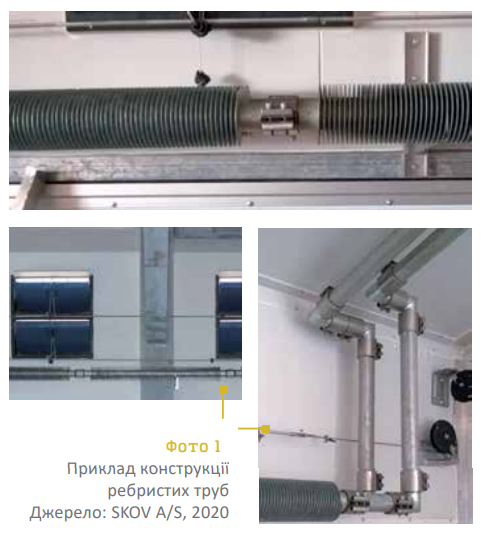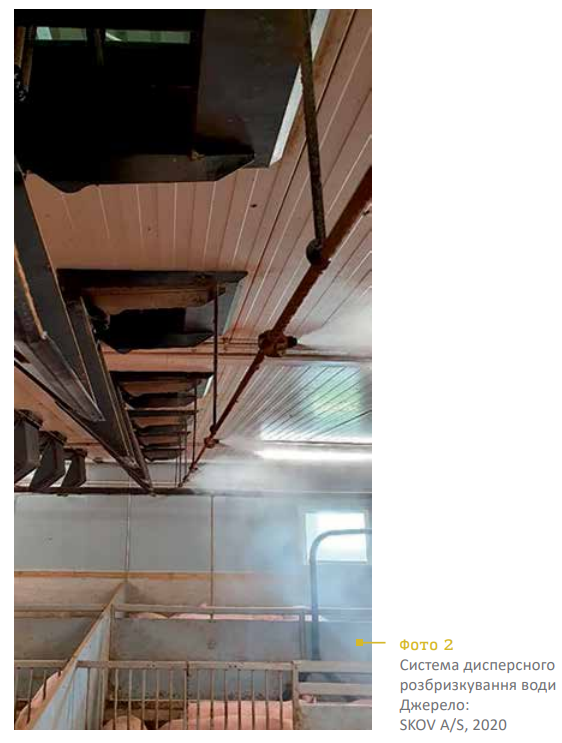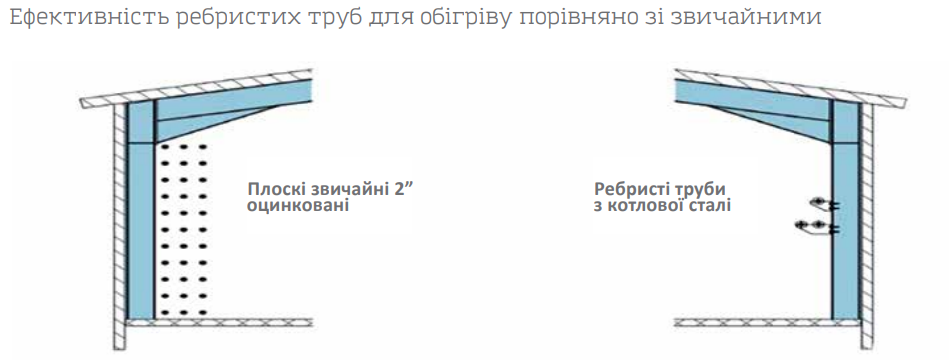Microclimate — a set of air parameters in the production room and their management. For the latter it is important to pay attention not only to the temperature, but also critical indicators: air velocity, humidity, noise and lighting in the room, the level of CO2, ammonia, etc. Also, when designing the microclimate system, the requirements of the technology of rearing animals: buildings, climatic features of the area, etc. should be taken into account.
The effectiveness of growing pigs directly depends on the temperature regime in the room. For example, at the optimal temperature, pigs need a minimum of energy to maintain the process of life and body temperature. At the same time, the maximum amount of energy is transformed into body weight. Therefore, at lower temperatures, pigs begin to eat more food, but this energy is spent on maintaining body temperature rather than growth.
The opposite situation occurs when the temperature is too high — the animals do not consume food well because they need to cool their bodies. Consequently, they grow more terribly. The solution is to keep the animals at a comfortable temperature. This is now easy to achieve with modern technology:
— air circulation systems;
— multi-level exhaust systems;
— fans or exhaust shafts;
— cooling systems;
— heating system;
— control systems.
Important! When installing underfloor heating it is important to calculate the capacity of the system correctly. In case of overheated floors the piglets can change the defecation zone from a slotted floor to a solid floor for cooling. Consequently this leads to considerable difficulty in rearing the animals and additional costs for washing the machines.

An example of the design ribbed pipes
Heating
The heating system on the farm should provide optimal, uniform distribution of heat in the room, ensuring the same temperature in the building where the pigs are kept. It should also mix the cold air that enters the room with the warm air. The best option for heating a pig farm is a hot water system. Pipes of the heating system should be made of quality galvanized steel. A good solution when the design of the pipes involves a large number of vectors - thus significantly improving the heat output from one meter of pipe. For connections, it is better to use quick-release tight clamps, which greatly simplifies the installation process compared to the spiral connection. It is better to use ribbed pipes for heating truss rooms. Compared to conventional flat, they need to be mounted much less to provide the same amount of heat (Figure 1). Due to the design of ribbed pipes, their heat output per meter of length is much greater compared to conventional pipes (picture 1). Ribbed tubes are installed along the entire room of the farm under the inlet valves, which heats the cold air before it reaches the animal housing area. Ribbed pipes allow the temperature in the room to increase faster. To regulate the temperature mode, special regulating units are installed - an automated heating system control. After entering the necessary data into the computer, the system itself regulates the hot water valve in the system. This technology allows you to accurately and evenly change the amount of heat in the room. Quite often, in addition to the heating system, floor heating systems are also used. For this purpose, a polymer pipe is mounted on a reinforcement grid, which is poured with concrete. Most often the floor heating system is used in nurseries and growing rooms to keep the floor dry. In addition, it makes it possible to set a comfortable temperature for the piglets in the solid floor areas. For example, 280 C when in the other part of the room it is 6-7 0 C lower. Most often boilers are installed to heat water. Depending on the type, they can run on different types of fuel: solid fuel, gas or diesel.
The efficiency of pig rearing depends directly on the temperature of the house. For example, at optimal temperature, pigs require a minimum of energy to maintain their vital functions and body temperature.
Cooling
Pigs are very sensitive to high temperatures, so in today's production conditions a cooling system is a necessity. For example, when the outside temperature exceeds 300C, the average daily growth rate worsens and animal mortality increases. If the air temperature in the room where the pigs are kept exceeds 24-260 C, they create a defecation zone on a solid floor for cooling. At temperatures above 25-270 C, the quality of semen in boars deteriorates, and the percentage of stillbirths in sows increases. Three methods are commonly used to cool livestock buildings:
1. Increasing ventilation: 100 to 200%.
2: evaporative cooling: high pressure nozzles or baffle plate cooling systems.
3. Air velocity increase: wall dampers, ceiling dampers, tunnel ventilation. In hot weather, even if you increase the ventilation rate and more air enters the room at high velocity, it is quite difficult to keep the temperature at the required level without using cooling systems. Often, high-pressure cooling systems are used in parallel with the ventilation system, where water is sprayed into the room (photo 2).

Dispersion water spray system
The resulting fog evaporates in the warm air of the room and due to this occurs cooling. Depending on the organization of the cooling system and the climate zone in which the production is located, this way you can reduce the temperature by 2-100C. This cooling effect is achieved without increasing the humidity in the room, which may adversely affect the animals. The high-pressure cooling system can also be used to humidify and knock down dust, if necessary. Sometimes this system is used to soak up dirt between batches of animals in the room. Along with the combitunnel and tunnel type of ventilation, cassette cooling systems are used. The incoming air flows through the mats, which are permanently irrigated by the recirculation of water, and cooled by absorbing the water vapor. There is no need to install an additional water tank. The tank is built into the bottom trough and is part of the water supply system.
AgroKlimat Ukraine LLC:

2 660 Kiev, Ukraine; str. Eugene Sverstyuk, 19, office 914

+38 067 386 26 91, +38 829 52 62, +38 067 537 36 67

volodymyr.brovchenko15@gmail.com





.jpg)